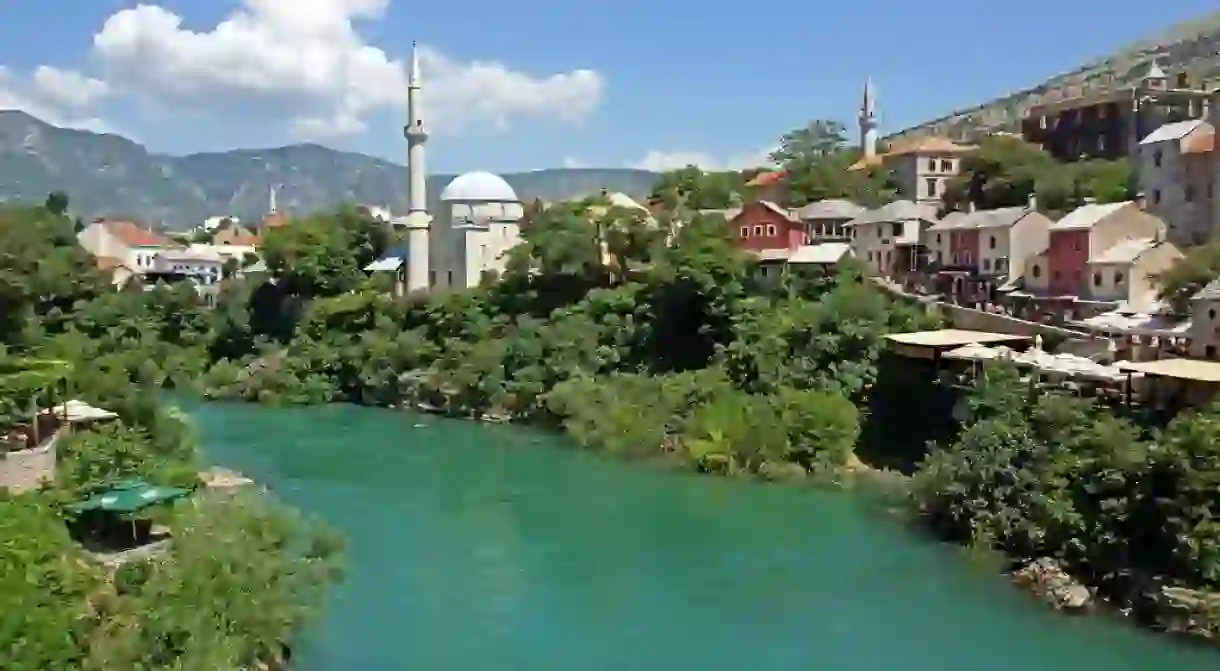8 Epic Places in Bosnia Every Local is Proud Of

Bosnia and Herzegovina is a large country, with many hidden areas where locals love to spend their time. Mountains, caves, waterfalls, and long winding rivers with clear water are some of the favourites. Here are eight places Bosnians are proud of, and that tourists will love too.
Tajan Nature Park
Tajan, near Zenica, is a protected area with clear lakes, springs, and waterfalls. Locals come on weekends for the natural beauty of the 1297 metre (4255 feet) mountain, and to hike or cycle along 60 kilometres (37 miles) of trails. Several canyons, including the stunning Canyon Macica, can be found in Tajan Nature Park, along with more than 100 caves with a unique array of stalactites and stalagmites.
The Austro-Hungarians saw the potential for Tajan and built a railway to transport and exploit timber. Cabins sprouted up for the wealthy to enjoy the conifer forests and biodiversity. Today, the park is home to a range of wildlife, including 25 European brown bears.
Kravice Waterfall
Imagine white water cascading from lush green forest above, into a green lake below, against the backdrop of a deep blue sky. Kravice Waterfall in Herzegovina, 40 kilometres (25 miles) south of Mostar, attracts nature lovers from around Bosnia and Croatia.
Kravice has approximately 20 falls in a semi-circle, cascading into the lake where swimmers soak in refreshing cold water on a hot summer’s day. Locals say the best time to visit is spring, when the surrounding forest is full of colour.
Cafes and restaurants and several picnic spots line the lake. When the weather is warm, camping spots are available for overnight stays.
Admission to Kravice Waterfalls is 6KM ($3.60). It’s tricky to reach on your own, so joining an organised tour or taking a taxi is easier.

Bijambare
Ask any Bosnian the best caves to visit and they’ll almost always tell you to visit Bijambare. Found 40 kilometres (25 miles) north of Sarajevo (near Ilijas) at an elevation of 950 metres (3117 feet), this 340-hectare park is a paradise for lovers of the outdoors.
Bijambare houses five famous caves; the largest is called Bijambare Main Cave. Visitors follow a 420 metre (1378 foot) path into the cave through four cavernous chambers. The most famous, the Music Hall, stretches 60 metres (197 feet). Guides take tourists through the complex, showing the various cave structures, stalagmites, and stalactites for 3o minutes (admission is 3KM; $1.80).
Apart from the caves, thick forests of pine, oak, and beech burst with wildlife and colour. Crisscrossing streams form several small, clear lakes and pools, and meadows stretch into the near distance. Hiking and cycling trails take you around this natural paradise, and the picnic areas are always bursting with locals. For a relaxing retreat, book a night in one of the log cabins.
As you’re leaving, visit Begovo Selo. This Ethno Village serves some of the best traditional food in Bosnia.
Bjelasnica
Winter sports fans flock to Bjelasnica to the southwest of Sarajevo in the Bosnian Dinaric Alps. In winter, up to three metres of snow covers the slopes.
Summers are cool on Bjelasnica, and blankets of green grass cover the hills. Cottages along parts of the trail serve traditional slow-cooked beans with freshly baked bread, the perfect warm meal on a chilly day. A famous Bosnian cheese, Kajmak, originates from these mountain villages too.

Una National Park
Una, in northwest Bosnia near the Croatia border, is home to clear rivers. Both the Una and Unac Rivers pass through forming hidden waterfalls, Strbacki Buk and Martin Brod to name a few.
White-water rafting and kayaking in the cold, blue-green water are popular activities. If you’re not into water sports, rent a mountain bike and ride along the trails. Milanceva Kula, a ruinous Roman Fort and Ostrovica Fortress are nearby.
Sutjeska National Park
The oldest National Park in Bosnia and Herzegovina opened in 1963. It houses one of only two remaining primaeval forests in Europe. Sutjeska covers an enormous area of 17,500 hectares, with diverse wildlife including bears, deer, and wolves. Hikers relish the nine trails, which vary in difficulty from light treks to a gruelling 22 kilometre (13.6 mile) slog.
One of the Sutjeska’s highlights is the giant socialist monument commemorating Tito’s guerrillas, who defeated the Nazis in 1943.

Konjic
Hikers and bikers love the trails in Konjic along the Visocica Mountain Range. Fans of rafting race through the white waters of the River Neretva. But, there’s also something strange and extraordinary in this small Herzegovinian town between Mostar and Sarajevo. In 2011, the discovery of Tito’s bunker transformed the area into a major attraction. Bizarrely, it’s a modern art gallery today.
Mostar and the Old Bridge
The hands-down winner of the grandest place in Bosnia and Herzegovina every local is proud of is the UNESCO-listed Stari Most Bridge. The hump-backed bridge, commissioned by Suleiman the Magnificent in 1557, crosses the River Neretva. Two defensive towers on either side once protected the structure from invaders. Tourists take day trips from neighbouring Croatia to see this structure. It’s a primary reason why many people visit Bosnia.














